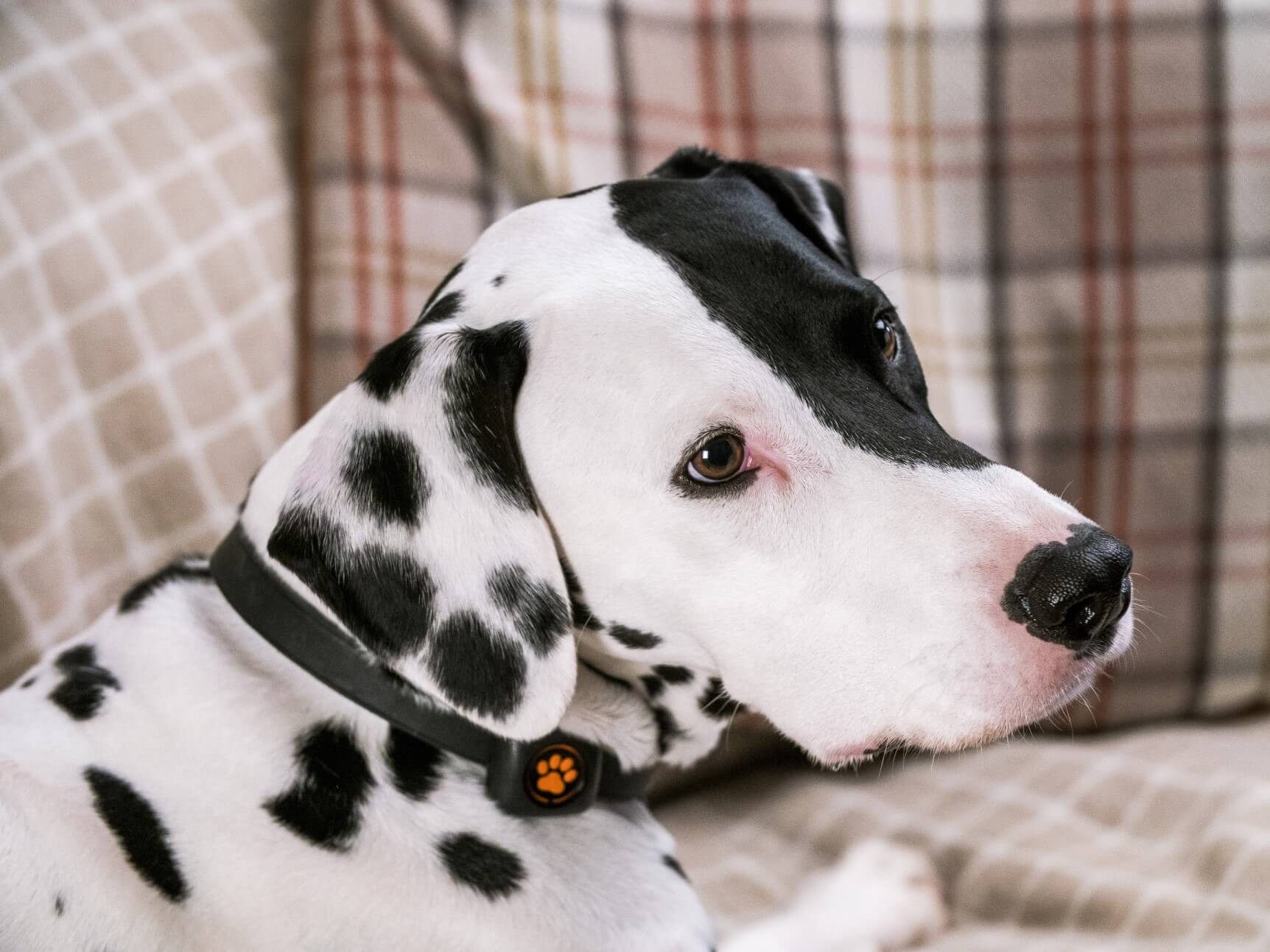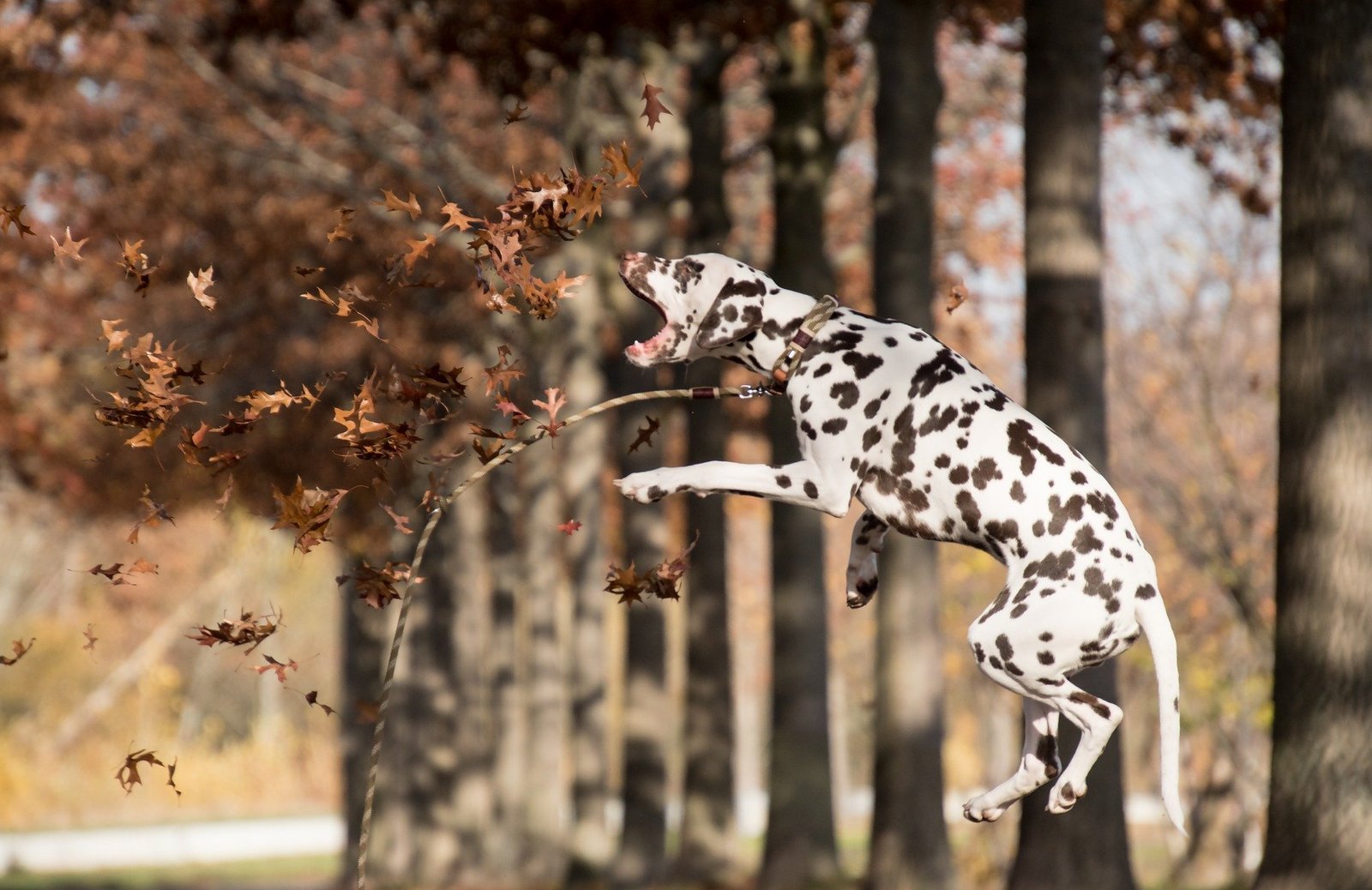Did you know that Dalmatians were originally bred to be carriage dogs? These elegant and athletic dogs were trained to run alongside horse-drawn carriages, covering long distances. With their strong endurance and stamina, it’s no surprise that Dalmatians still require a significant amount of exercise today.
Dalmatians have a high energy level and need about 60 to 90 minutes of exercise each day. This can be in the form of brisk walks, runs, agility training, or even engaging in interactive games. Without sufficient exercise, Dalmatians may become bored or restless, leading to behavioral issues. Regular physical activity not only helps them burn off their excess energy but also supports their overall mental and physical well-being. So, if you’re considering adding a Dalmatian to your family, be prepared for plenty of active playtime and exercise opportunities to keep them happy and healthy.

How Much Exercise Does a Dalmatian Need?
Dalmatians are known for their elegant spotted coats and energetic personalities. But how much exercise do these unique dogs actually need to stay happy and healthy? In this article, we will explore the exercise requirements of Dalmatians and provide you with valuable insights on how to meet their needs.
The Importance of Exercise for Dalmatians
Dalmatians are an active breed with high energy levels, and regular exercise is crucial for their overall well-being. These dogs have a history of being carriage dogs, trotting alongside horse-drawn carriages for long distances. As such, Dalmatians require a significant amount of physical activity to prevent them from becoming bored or developing behavioral issues.
Exercise provides numerous benefits for Dalmatians, both physically and mentally. It helps them maintain a healthy weight, strengthens their muscles, and improves their cardiovascular health. Regular physical activity also allows Dalmatians to release pent-up energy, which can help prevent destructive behaviors such as excessive barking or chewing. Additionally, exercise stimulates their minds, keeping them mentally sharp and engaged.
1. Daily Exercise Routine for Dalmatians
To keep your Dalmatian happy and healthy, it is recommended to provide them with at least 60 minutes of exercise every day. This can be divided into multiple sessions to prevent exhaustion. Remember, these are active dogs that require mental and physical stimulation to thrive.
You can start by taking your Dalmatian for a brisk walk in the morning, followed by another energetic activity in the afternoon, such as playing fetch or participating in agility training. In the evening, consider engaging them in interactive games or puzzles to keep their minds stimulated. It’s important to keep the exercise routine consistent to establish a healthy habit for your Dalmatian.
While exercise is essential, it’s important to avoid overworking your Dalmatian, especially during hot weather. These dogs are prone to overheating due to their short coats and lack of sweat glands. Be mindful of the temperature and adjust the intensity and duration of exercise accordingly to prevent heatstroke or exhaustion.
2. Mental Stimulation for Dalmatians
In addition to physical exercise, Dalmatians thrive on mental stimulation. These intelligent dogs enjoy challenges and tasks that require problem-solving skills. Providing them with puzzle toys or engaging in obedience training sessions can help keep their minds sharp and prevent boredom.
Consider enrolling your Dalmatian in agility or obedience classes, as they not only provide an outlet for their energy but also allow them to learn new skills and interact with other dogs. This type of mental stimulation can help prevent behavioral issues that may arise from boredom, such as excessive barking or destructive chewing.
Creating a stimulating environment at home is also essential. Provide your Dalmatian with interactive toys, rotate them regularly to keep things interesting, and introduce new challenges regularly. Engage in interactive play sessions that involve problem-solving tasks to keep their minds stimulated and engaged.
3. Exercise Variation for Dalmatians
Dalmatians are versatile dogs that enjoy a wide range of activities. While regular walks and runs are important for their physical health, it’s beneficial to introduce variety into their exercise routine to keep them engaged and prevent boredom.
Consider incorporating activities such as swimming, hiking, or playing Frisbee to provide additional mental and physical challenges for your Dalmatian. These activities not only provide excellent exercise, but they also allow your Dalmatian to experience new environments and stimuli, which can be enriching for their overall well-being.
Finding activities that are compatible with your Dalmatian’s energy levels and individual preferences is key. Some Dalmatians enjoy long runs or bike rides, while others may prefer shorter, high-intensity bursts of activity. Observe your dog’s preferences and adjust the exercise routine accordingly.
4. Consulting with Your Vet
Every Dalmatian is unique, and their exercise needs can vary based on factors such as age, health condition, and individual temperament. It’s always a good idea to consult with your veterinarian to determine the most suitable exercise routine for your specific Dalmatian.
Your vet will be able to provide personalized guidance based on your dog’s health and lifestyle. They can assess any underlying conditions that may impact their exercise requirements and provide advice on appropriate activities for your Dalmatian’s age and energy level.
Key Takeaways: How Much Exercise Does a Dalmatian Need?
- Dalmatians are an active and energetic breed that require daily exercise.
- On average, a Dalmatian should be exercised for at least 30-60 minutes each day.
- Activities such as brisk walks, jogging, and playing fetch are great for Dalmatians.
- Dalmatians also enjoy mental stimulation through training, puzzle toys, and interactive games.
- Regular exercise helps maintain a healthy weight, prevent behavioral problems, and keep Dalmatians happy.
Frequently Asked Questions
In this section, we’ll answer some common questions about the exercise needs of Dalmatians. Whether you’re considering getting a Dalmatian or already have one, it’s important to understand their exercise requirements to keep them happy and healthy.
1. What exercises do Dalmatians enjoy?
Dalmatians are an active breed and enjoy a variety of exercises. They love long walks, jogging, and hiking. Additionally, games like fetch or agility training can provide mental and physical stimulation. Swimming is another activity that many Dalmatians enjoy due to their strong swimming abilities.
It’s essential to provide regular opportunities for physical and mental exercise for your Dalmatian to prevent boredom and promote their overall well-being. Remember to tailor the intensity and duration of the exercise to your individual dog’s age, health, and fitness level.
2. How much exercise does a Dalmatian need each day?
Dalmatians are an energetic and athletic breed, requiring a significant amount of exercise each day. On average, they need at least 60 minutes to 90 minutes of physical activity. This can be split into two or three sessions throughout the day.
A lack of exercise can lead to behavioral problems and weight gain in Dalmatians. However, it’s important not to over-exercise them, especially when they’re young and their bones are still developing. Always consult with your veterinarian to determine the appropriate exercise routine for your Dalmatian.
3. Can Dalmatians live in apartments or do they need a yard?
While Dalmatians are energetic dogs, they can live in apartments as long as they receive enough exercise. However, it’s important to provide them with ample mental and physical stimulation indoors and take them for regular outings and walks outdoors.
If you live in an apartment, ensure you have access to nearby parks or open spaces for your Dalmatian to run and play. Regular playdates with other dogs can also provide additional exercise and socialization opportunities for your furry friend.
4. How do I know if my Dalmatian is getting enough exercise?
There are some signs that can indicate if your Dalmatian is getting enough exercise. A content and well-exercised Dalmatian will have good muscle tone, a healthy weight, and a calm demeanor when indoors. They should also show enthusiasm and energy during exercise sessions.
If your Dalmatian displays destructive behavior, excessive barking, or seems restless, it may be a sign that they need more exercise. Remember, every dog is unique, so it’s important to pay attention to their individual needs and adjust their exercise routine accordingly.
5. Can I exercise my Dalmatian off-leash?
Exercising a Dalmatian off-leash can be possible but should be done in a safe and controlled environment. Dalmatians have a strong prey drive and may be easily distracted by squirrels, other animals, or even their own independent streak.
Before allowing your Dalmatian off-leash, ensure they have good recall and obedience training. Start in secure, enclosed areas and gradually progress to more open spaces. Always prioritize your Dalmatian’s safety and be aware of any leash laws or restrictions in your area.

Dalmatian Dog Exercise [Needs and Ideas]
Summary
So, how much exercise does a Dalmatian need? Dalmatians are energetic dogs that require daily physical activity and mental stimulation. They thrive on activities like long walks, runs, and play sessions.
By providing them with at least 30-60 minutes of exercise every day, you can keep your Dalmatian happy and healthy. It’s important to note that they also enjoy participating in dog sports and agility training.
Remember, a bored Dalmatian can become destructive, so keep them active and engaged to ensure their well-being.
